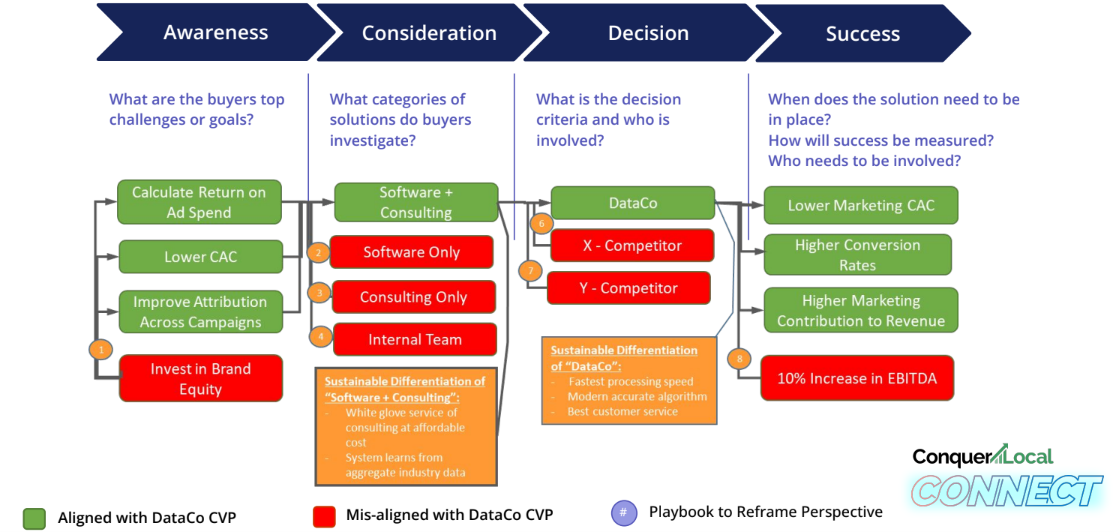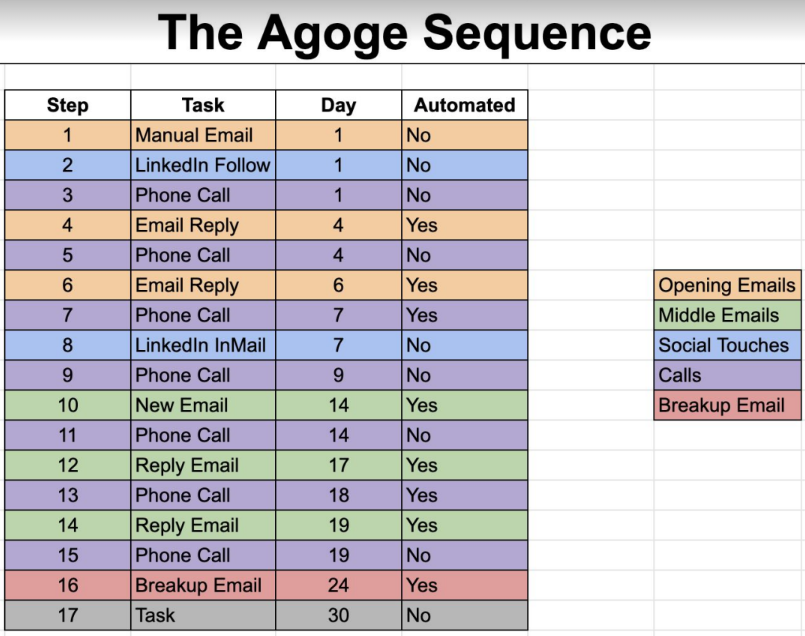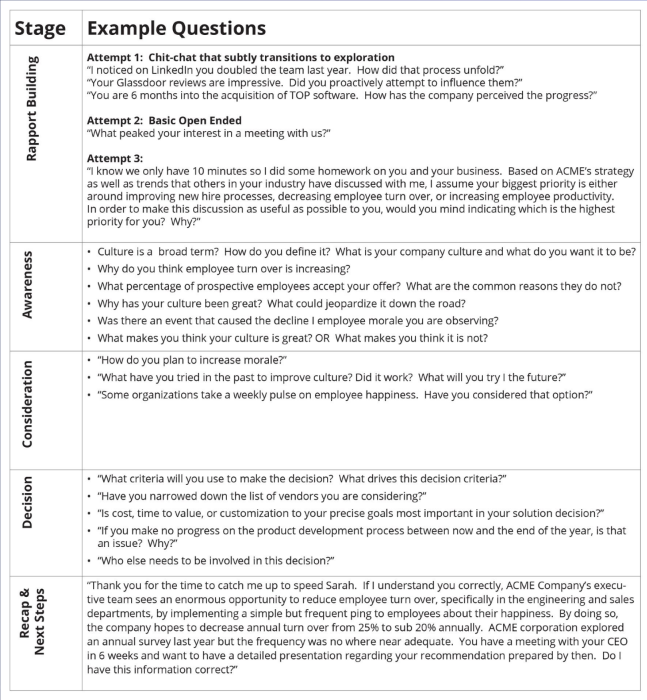Mark Roberge’s 5-step sales process to win more deals
Mark Roberge, Managing Director of Stage 2 Capital, knows a thing or two about creating an effective sales process.
Want replies? Download your free sales email templates today!
The author of the best-selling book Sales Acceleration Formula, Mark Roberge has devoted much of his career to helping early-stage companies scale their revenue, customer base, and salesforce at a rapid clip. He also teaches the next generation of sales professionals about the art of customer centricity and its impact on business growth.
He believes the single biggest issue hindering many marketing agencies from realizing their true potential is not what they sell, but how they sell.
“Selling isn’t about hawking services to the buyer. Rather, it’s about understanding what the buyer wants and aligning your agency to their needs,” Roberge told agency managers at Conquer Local Connect, Vendasta’s virtual sales and marketing conference.
All too often, he finds agency sales teams present themselves to prospects as “money-hungry sleazy devils” rather than “thoughtful intellectual professionals” who win by understanding business owners’ needs and helping them succeed.
Here are the five steps Roberge says agencies can take to recraft their sales playbook and win more deals.
Step 1 – Start with the buyer journey
A common mistake agencies make is taking an “inside-out” approach to selling; that is, they try to force buyers to understand their services, rather than understand how to help buyers.
“Most agencies hire salespeople, codify their sales process, build a slide deck about their services and give that to their salespeople. These reps then ‘show up and throw up’ by overwhelming prospects with a product pitch,” Mark Roberge says.
He continues, “Instead, we should think about designing the process from the ‘outside-in’. Start with the buyer and forget about your agency and forget about your services. What is your buyer focused on today?”
Agencies should use the following template, which contains the four key components of the buyer journey framework, in order to understand the needs of small and medium businesses (SMB):
- Awareness – What are the buyers’ top challenges or goals?
- Consideration – What categories of solutions do buyers investigate?
- Decision – What is the decision criteria and who is involved?
- Success – When does the solution need to be in place, how will success be measured, and who needs to be involved?
Below is an example of how this framework was applied by fictional digital agency DataCo, which provides marketing attribution services. This case study is used by Roberge during his Harvard Business School lectures.

“They’ve mapped this out and trained their salespeople on this and the boxes in orange speak to the unique differentiators of your agency,” Roberge explains.
“This will help your sales reps answer questions like why should the buyer go with an agency as opposed to trying to do it themselves or hiring someone, and why should they go with your agency? Your salespeople need to know all these components.”
One immediate action agencies can take today is to train sales staff to reframe conversations with prospects around their needs, and input insights from those discussions into the buyer journey template.
This will help sales teams better understand customers. It will also allow them to pinpoint where they’re at along the buyer journey and have contextual conversations.
“No matter where they are, I can sell them. If they want to lower their cost of acquisition and are thinking about hiring a consultant, I can sell them. If they want to increase their return on ad spend and are thinking about getting the cheapest solution in the industry, I can sell them, but the pitch is different,” Mark Roberge says.
“Unless you know the context of where your customer is at in the buyer journey, you can’t optimize the conversation.”
Step 2 – Develop a prospecting guide
The next step in the playbook is to develop a prospecting strategy that drives an agency’s sales team to use contextual and omnichannel communications and rejig when they make contact.
Far too many agencies treat sales as a 9–5 job, when the reality is business owners are too busy to talk during that time.
Citing proprietary data, Roberge provides the following insights:
- 4:00–5:30 PM is the best time to call a prospect, while 7:45–8:00 AM is the second-most convenient time.
- Aim to respond to queries within five minutes. Any longer and the chance of making contact exponentially decreases.
- Calling six times results in a 90% chance of contact, so don’t give up after two or three attempts.
Mark Roberge says one of the best prospecting playbooks is titled the “Agoge Sequence,'' developed by Outreach.io. The Agoge Sequence contains 17 different touch points across multiple channels (as depicted below) and has proven to triple response rates from prospects.

However, the increased frequency of contact in the Agoge Sequence must also be met by a greater degree of personalization in the underlying communications, and this is where big data comes in.
“Do the research, look them up on LinkedIn, look at their role, experience, and education—these are all very telling things, and then examine your first-level data,” Mark Roberge says.
“What emails have they received from your agency? What webpages have they looked at? What blog articles have they read? This is the gold for us to incorporate in our emails and calls, and it makes the difference between a 5-percent callback rate and a 25-percent callback rate.”
Step 3 – Develop a discovery guide
While clever prospecting can unlock doors, it’s the discovery call that’s key to opening it and moving buyers into the middle of the funnel.
And the simple trick with discovery calls is to listen more, talk less.
“Bottom line, the top salespeople in the industry speak less than 50 percent of the time in the first meeting. The worst talk over 70 percent,” Roberge says, citing data from Gong.io.
“What percent of the time are your salespeople talking?” Roberge asks.
An effective call is broken into three phases:
- Rapport building
- Thorough discovery of 3–4 business issues
- Relevant logistics and next steps
He encourages agencies to create a one-page discovery call document (see below example) to bring to meetings. This shouldn’t be a strict script but rather a guide that helps sales representatives ask the right questions and have productive conversations.

The secret sauce to an effective call, Roberge says, is to actively listen and summarize what the buyer has said at the end of a conversation.
“Imagine a salesperson walking in and recapping exactly what’s bothering you and framing your problem even better than you can. That salesperson likely increased the probability of closing a deal from 10 percent before the meeting to 50 percent after the meeting,” he says.
Step 4 – Customize the pitch for the buyer
Following the discovery call is the all-important demo, and this is the part of the buyer journey where agencies should avoid a common client pet peeve at all costs: delivering the same generic presentation given to all prospects.
“What’s the whole point of understanding the uniqueness of their buyer perspective if you’re not going to use that information? We have to teach our salespeople how to tailor their pitch,” Mark Roberge says.
He isn’t suggesting agencies reinvent the wheel and make a new presentation for each prospect. Rather, they should develop several templates and make the effort to customize the appropriate one to cover the following elements for each meeting:
- Recap the buyer’s context
- Share their vision
- Illustrate service capability to meet buyer needs
- Present case study aligned with buyer context
- Discuss price, integration, training, etc.
- Ask for questions
- Recap findings and ask for business
Mark Roberge stresses whatever you do, don’t make the first slide about your agency and harp on about your team, experience, headquarters, and products. Leave that till the very end.
Step 5 – Personalize the onboarding process
In the same vein as the presentation guide, agencies should also customize the onboarding process.
“The same is true for once they sign up—don’t make it a generic onboarding. If you have a different delivery team, make sure they’re in sync with the sales team and understand the buyer’s context and needs,” Roberge says.
An agency’s onboarding representative should be capable of summarizing the buyer’s issues and recommend the best approach to setting them up as a customer.
“It’s not completely customized, but it feels custom to them, and they feel heard,” he says.
Is it time to change up your sales playbook?
The sales process has been dramatically transformed in recent years. Gone are the days when agencies can simply hire reps, assign territories, and cold call their way to success with a single talk track.
In order to succeed in this new reality, agencies must rewrite their sales playbook and put buyers’ needs at the center. They must view their relationship with prospects and customers as a journey.
Sales teams must leverage the power of data to understand customer intent while striving to become good listeners and problem solvers. This will allow them to stand out from the pack and dramatically improve the chances of conversion.
[adrotate banner="166"]

